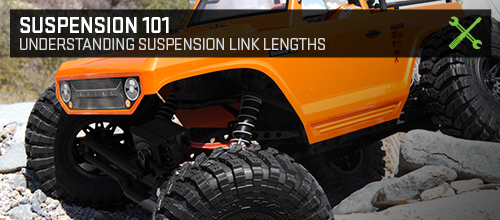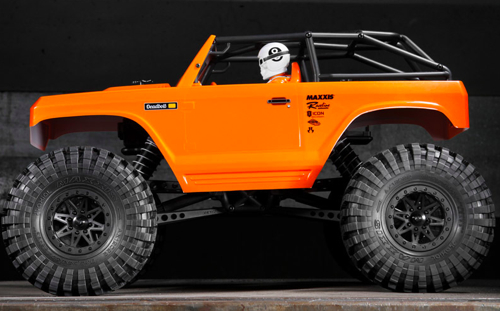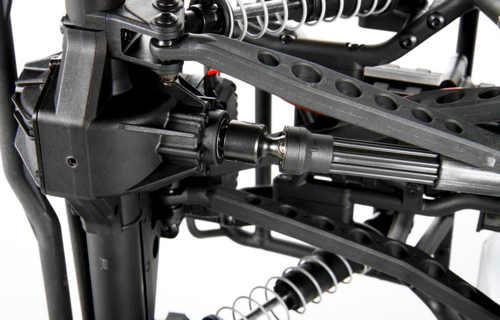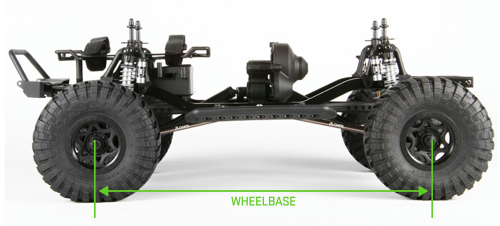Posted: 4/16/14


The Axial Wraith, Ridgecrest, SCX10 and XR10 all use linked suspension designs. This means the axles are attached to the chassis via links, be it a 3- or 4-link setup. The links hold the axles in position and allow for an impressive amount of smooth terrain conquering articulation. Links also allow for a certain amount of setup tuning.

Pinion Angle
If you have a full-size off-road vehicle such as a Jeep Wrangler, you are probably aware of pinion angle. For those unclear, pinion angle refers, not to the motor’s pinion gear, but to the angle of the input gear in the axle when viewed from the side. The combo of gears in a solid axle is called the ring and pinion, and if the pinion angle is too shallow, the drive shaft can bind. Pinion angle isn’t often referred to by an actual measurement or even measured. Sometimes full-size vehicles will be fitted with a tapered shim between the bottom of the leaf pack and the axle. This shim will be measured in degrees such as two or three degrees. Full-size vehicles such as the late-model Jeep Wrangler uses coil springs front and rear with links called control arms. Aftermarket companies offer adjustable control arms that allow the pinion angle to be adjusted. A longer upper link increases pinion angle (tilts it up).
Adjusting the length of the upper links on the front axle also changes caster. Caster is the angle of the front axle’s hubs. Again, this is best viewed from the side. Take a look at the C-hub on the end of the axle. This is where the steering pivots. A vertical line can be drawn from the top pivot point on the C down through the bottom pivot point. The top pivot is further back than the lower pivot. This is positive caster. As you lengthen the upper link(s), the caster angle is decreased. On a rock crawler, too little caster can cause poor steering as the inefficient steering geometry will cause the tire to somewhat push and fold over instead of grip and steer.

Wheelbase
The upper links help position the axle and the lower links do the same, but in reverse—longer lower links decrease pinion angle. The lower link length is really properly used to adjust wheelbase. After the desired wheelbase is achieved, pinion angle is adjusted with the correct upper link length. A longer wheelbase will help increase stability when climbing, which is very handy but less maneuverable—longer vehicles need more room to turn. Stretching the wheelbase a small amount is a good adjustment to experiment with, but you definitely don’t want an overly stretched wheelbase combined with negative caster. If you are often attempting a lot of difficult climbs, a longer wheelbase may be in order, but obviously there is a point of diminishing return. Remember to adjust the wheelbase you will need to lengthen both the lower and upper links. Adjust the upper links for proper pinion and caster angles.
You can also change weight distribution by lengthening rear links more than the front. This will create more forward weight bias and increase climbing performance.